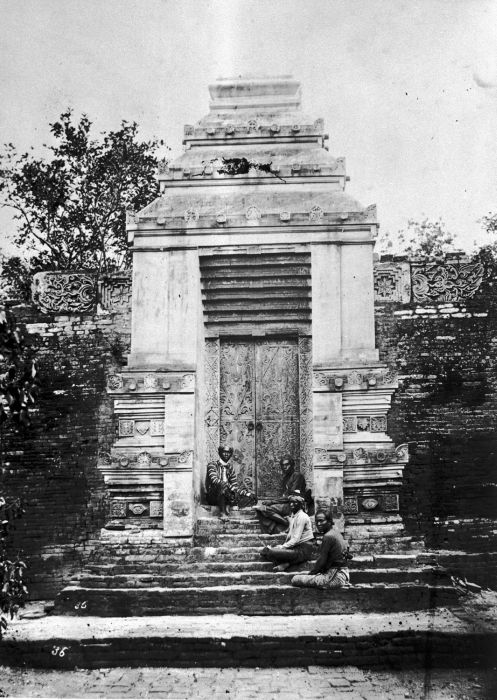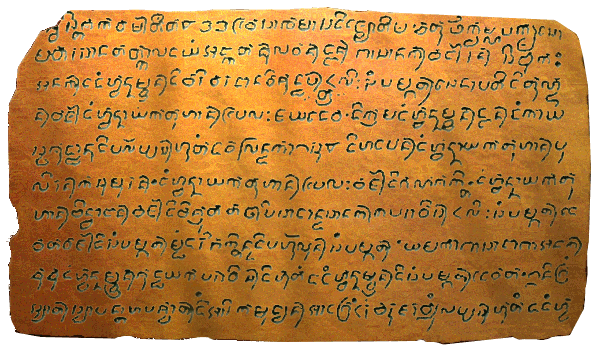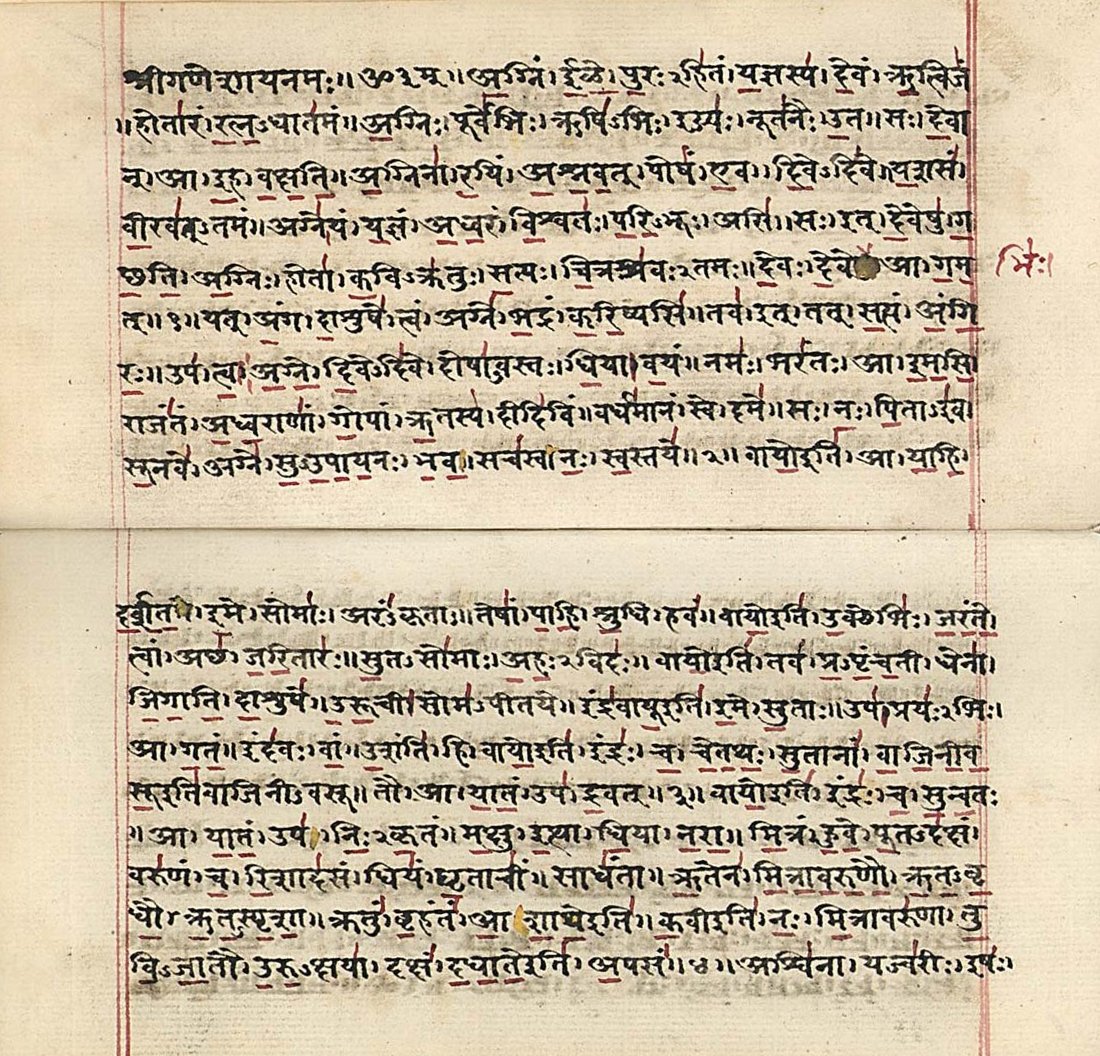|
Senapati
Senapati (Sanskrit: सेनापति; ''sena-'' meaning "army", ''-pati'' meaning "lord") is a title in ancient India denoting the rank of military commander or general of the army. It was a hereditary title of nobility used in the Maratha Empire. During wartime, a ''Sardar Senapati'' or ''Sarsenapati'' (also colloquially termed ''Sarnaubat'') functioned as the Commander-in-Chief of all Maratha forces, coordinating the commands of the various ''Sardars'' in battle. Ranking under the heir-apparent crown prince and other hereditary princes, the title ''Senapati'' most closely resembles a British Duke or German ''Herzog'' in rank and function. On occasion, the title ''Mahasenapati'' (Sanskrit: महा ''maha-'' meaning "great") was granted; this best equates to a Grand Duke or a German ''Großherzog''. Unlike ''Sardar'', ''Senapati'' is a primogeniture hereditary title that passes on to the eldest son. There are several royal ''Senapati'' families alive today, including ... [...More Info...] [...Related Items...] OR: [Wikipedia] [Google] [Baidu] |
Sutawijaya
Panembahan Senapati, formally styled Panembahan Senapati ing Ngalaga Sayyidin Panatagama (died in Jenar (now Purwodadi, Purworejo), 1601), was the founder of the Mataram Sultanate. Origin Born Danang Sutawijaya, known as Dananjaya, he was the son of Ki Ageng Pamanahan, a Javanese chief and retainer to Joko Tingkir, who reigned as Hadiwijaya, Sultan of Pajang. It was said that Pamanahan was a descendant of the last Majapahit king. Sutawijaya's mother was Nyai Sabinah who, according to Javanese chronicles, was a descendant of Sunan Giri, a member of Walisanga. Nyai Sabinah had a brother, Ki Juru Martani, who was elected as the first ''patih'' (viceregent) of Mataram. He had an important role in arranging strategy to suppress Arya Penangsang's rebellion in 1549. Sutawijaya was adopted by Hadiwijaya as an inducement, because Hadiwijaya and his wife still had no children yet in that time. Hadiwijaya gave him a residence in the north of a market, thus his nickname "Raden Ngabehi ... [...More Info...] [...Related Items...] OR: [Wikipedia] [Google] [Baidu] |
Mataram Sultanate
The Sultanate of Mataram () was the last major independent Javanese kingdom on the island of Java before it was colonised by the Dutch. It was the dominant political force radiating from the interior of Central Java from the late 16th century until the beginning of the 18th century. Mataram reached its peak of power during the reign of Sultan Agung Anyokrokusumo (), and began to decline after his death in 1645. By the mid-18th century, Mataram lost both power and territory to the Dutch East India Company (Dutch: ''Vereenigde Oost-Indische Compagnie''; ''VOC''). It had become a vassal state of the company by 1749. Etymology The name ''Mataram'' itself was never the official name of any polity, as the Javanese often refer to their realm simply as ''Bhumi Jawa'' or ''Tanah Jawi'' ("Land of Java"). ''Mataram'' refers to the historical areas of plains south of Mount Merapi around present-day Muntilan, Sleman, Yogyakarta, and Prambanan. More precisely, it refers to the Kota ... [...More Info...] [...Related Items...] OR: [Wikipedia] [Google] [Baidu] |
Sardar
Sardar, also spelled as Sardaar/Sirdar ( fa, سردار, , 'commander', literally 'headmaster'), is a title of royalty and nobility that was originally used to denote princes, noblemen, chiefs, kings and other aristocrats. It has also been used to denote a chief or leader of a tribe or group. It is used as a Persian synonym of the title ''Emir'' of Arabic origin. In modern history it is known as the title for Afghan Princes during the Afghan Royal Kingdom, descending from the Emir Sultan Mohammed Khan Telai. It was also used as a title of merit in the ''Nishan-i-Sardari'' for outstanding service in statecraft. The term and its cognates originate from Persian ''sardār'' () and have been historically used across Persia (Iran), the Ottoman Empire and Turkey (as "Serdar"), Mesopotamia (now Iraq), Syria], South Asia (Pakistan, India, Bangladesh and Nepal), the Caucasus, Central Asia, the Balkans and Egypt (as "Sirdar"). The term ''sardar'' was used by Sikh leaders and general ... [...More Info...] [...Related Items...] OR: [Wikipedia] [Google] [Baidu] |
Manipur
Manipur () ( mni, Kangleipak) is a States and territories of India, state in Northeast India, with the city of Imphal as its capital. It is bounded by the Indian states of Nagaland to the north, Mizoram to the south and Assam to the west. It also borders two regions of Myanmar, Sagaing Region to the east and Chin State to the south. The state covers an area of . Manipur has been at the crossroads of Asian economic and cultural exchange for more than 2,500 years. It connects the Indian subcontinent and Central Asia to Southeast Asia, East Asia, Siberia, regions in the Arctic, Micronesia and Polynesia enabling migration of people, cultures and religions. During the days of the British Raj, British Indian Empire, the Kingdom of Manipur was one of the princely states. Between 1917 and 1939, some people of Manipur pressed the princely rulers for democracy. By the late 1930s, the princely state of Manipur negotiated with the British administration its preference to continue to be pa ... [...More Info...] [...Related Items...] OR: [Wikipedia] [Google] [Baidu] |
Jayadewa
Jayadewa or Jayadeva (Sanskrit: जयदेव ; full title: Hwan Nāyaka tuhan Pailah Jayadewa) was the name of the Lord Minister of Pailah at the time that the Laguna Copperplate Inscription was written in . According to the document, he served as the representative of the "Commander in Chief" ( tl, pamegat senāpati di Tundun) in pardoning the descendants of an individual named Namwaran of his debts. Although no other records describe his life and works, Jayadewa is an important figure in Philippine historiography because he is one of the persons clearly identified in the LCI, which is the earliest known written document found in the Philippines. Personal life He married Dayang Bukah, as in exchange to clear the debit of 1 ''kati'' and 8 ''suwarnas'' of Bukah's parents which is Namwaran and Dayang Angkatan. "On this occasion, Lady Angkatan, and her brother, Buka, the children of the Honourable Namwaran, were awarded a complete pardon from the Overall Leader ingof Tundú ... [...More Info...] [...Related Items...] OR: [Wikipedia] [Google] [Baidu] |
Tondo (historical Polity)
In History of the Philippines (900–1521), early Philippine history, the Tagalog people, Tagalog settlement at Tondo (; Baybayin: ) was a major trade hub located on the northern part of the List of islands in the Greater Manila Area, Pasig River delta, on Luzon island.Abinales, Patricio N. and Donna J. Amoroso, State and Society in the Philippines. Maryland: Rowman and Littlefield, 2005. as referred to in http://malacanang.gov.ph/75832-pre-colonial-manila/#_ftn1 Together with Maynila, the polity (''bayan'') on the southern part of the Pasig River delta, it established a shared monopoly on the trade of Chinese goods throughout the rest of the Philippine archipelago, making it an established force in trade throughout Southeast Asia and East Asia. Tondo is of particular interest to Filipino historians and historiography, historiographers because it is one of the oldest historically documented settlements in the Philippines. Scholars generally agree that it was mentioned in the ... [...More Info...] [...Related Items...] OR: [Wikipedia] [Google] [Baidu] |
Ghorpade
Ghorpade is a surname found among Marathi Brahmins and Marathas in the Indian states of Maharashtra and Karnataka. Notable people * Santaji Ghorpade (1645–1696), Maratha warrior, chief general of Rajaram Maharaj * Yeshwantrao Ghorpade (1908–1996), last raja of Sandur * M. Y. Ghorpade (1931–2011), politician from Karnataka * Jayasinghrao Ghorpade, Indian cricketer * Sujay Ghorpade (born 1965), Indian table tennis player * K. V. Ghorpade Krishna Rao Voomaji Rao Ghorpade, better known as K. V. Ghorpade (March 17, 1919 – December 23, 1997) was an Indian pathologist. He was born on 17 March 1919. After medical education, he worked under Dr. P. Krishna Rao and obtained Ph.D. fr ... (1919–1997), Indian pathologist References Sources Marathi *{{cite book, author1=Balagi Nathugi Gavand, author2=Govind Moroba Karlekar, title=Kshytriya Marathyanchi Vanshavali and Shannavkuli aani Surya, Som, Bhramh and Sheshvant, year=1997, publisher=Tukaram book Depo, Madhavbag, ... [...More Info...] [...Related Items...] OR: [Wikipedia] [Google] [Baidu] |
Maratha Empire
The Maratha Empire, also referred to as the Maratha Confederacy, was an early modern Indian confederation that came to dominate much of the Indian subcontinent in the 18th century. Maratha rule formally began in 1674 with the coronation of Shivaji of the Bhonsle Dynasty as the '' Chhatrapati'' (Marathi: "The title "Chhatrapati" was created by Shivaji upon his coronation"). Although Shivaji came from the Maratha caste, the Maratha empire also included warriors, administrators and other notables from Maratha and several other castes from Maharashtra. They are largely credited for ending the Mughal control over the Indian subcontinent and establishing the Maratha Empire. The religious attitude of Mughal Emperor Aurangzeb estranged non-Muslims, and his inability to finish the resulting Maratha uprising after a 27-year war at a great cost to his men and treasure, eventually ensued Maratha ascendency and control over sizeable portions of former Mughal lands in the north or ab ... [...More Info...] [...Related Items...] OR: [Wikipedia] [Google] [Baidu] |
Maratha
The Marathi people (Marathi: मराठी लोक) or Marathis are an Indo-Aryan ethnolinguistic group who are indigenous to Maharashtra in western India. They natively speak Marathi, an Indo-Aryan language. Maharashtra was formed as a Marathi-speaking state of India in 1960, as part of a nationwide linguistic reorganization of the Indian states. The term "Maratha" is generally used by historians to refer to all Marathi-speaking peoples, irrespective of their caste; however, now it may refer to a Maharashtrian caste known as the Maratha. The Marathi community came into political prominence in the 17th century, when the Maratha Empire was established under Chhatrapati Shivaji; the Marathas are credited to a large extent for ending Mughal rule over India. History Ancient to medieval period During the ancient period, around 230 BC, Maharashtra came under the rule of the Satavahana dynasty, which ruled the region for 400 years.India Today: An Encyclopedia of Life in ... [...More Info...] [...Related Items...] OR: [Wikipedia] [Google] [Baidu] |
Cambodia
Cambodia (; also Kampuchea ; km, កម្ពុជា, UNGEGN: ), officially the Kingdom of Cambodia, is a country located in the southern portion of the Indochinese Peninsula in Southeast Asia, spanning an area of , bordered by Thailand to the northwest, Laos to the north, Vietnam to the east, and the Gulf of Thailand to the southwest. The capital and largest city is Phnom Penh. The sovereign state of Cambodia has a population of over 17 million. Buddhism is enshrined in the constitution as the official state religion, and is practised by more than 97% of the population. Cambodia's minority groups include Vietnamese, Chinese, Chams and 30 hill tribes. Cambodia has a tropical monsoon climate of two seasons, and the country is made up of a central floodplain around the Tonlé Sap lake and Mekong Delta, surrounded by mountainous regions. The capital and largest city is Phnom Penh, the political, economic and cultural centre of Cambodia. The kingdom is an elec ... [...More Info...] [...Related Items...] OR: [Wikipedia] [Google] [Baidu] |
Sanskrit
Sanskrit (; attributively , ; nominalization, nominally , , ) is a classical language belonging to the Indo-Aryan languages, Indo-Aryan branch of the Indo-European languages. It arose in South Asia after its predecessor languages had Trans-cultural diffusion, diffused there from the northwest in the late Bronze Age#South Asia, Bronze Age. Sanskrit is the sacred language of Hinduism, the language of classical Hindu philosophy, and of historical texts of Buddhism and Jainism. It was a lingua franca, link language in ancient and medieval South Asia, and upon transmission of Hindu and Buddhist culture to Southeast Asia, East Asia and Central Asia in the early medieval era, it became a language of religion and high culture, and of the political elites in some of these regions. As a result, Sanskrit had a lasting impact on the languages of South Asia, Southeast Asia and East Asia, especially in their formal and learned vocabularies. Sanskrit generally connotes several Indo-Aryan lang ... [...More Info...] [...Related Items...] OR: [Wikipedia] [Google] [Baidu] |







